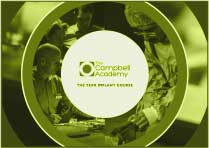If you read these pages regularly you will appreciate that for the past two years or so we have been quite into the digital dentistry revolution in dental practice and have been trying to find out as much information about this as possible.
Following on from purchasing the full Sirona CBCT and in practice milling system two years ago we are just about to take delivery of the 3-shape intraoral scanner from Trios and all of the software packages that go with that.
This perhaps seems like madness but it is very important for me to understand which system provides what and what the benefits and disadvantages are of both. I hope to report that honestly and fairly in this blog going forwards.
As things stand at the moment though, in utilising digital dentistry for implants in practice, there are effectively three broad work flows that you could enter into at the moment depending on where you were seated financially and in the developmental cycle of your practice.
- You have no digital capacity in your practice (no CBCT or introral scanner). You would refer your implant placements for CBCT to a local provider who would provide you with the raw ‘DICOM” files. You would take very careful and accurate study models of the patient (as if you were doing an Invisalign case) and send these to your digitally facilitating lab. The lab would then be able to use the DICOM files and a scan of the models to push this together to provide you with digital diagnostic wax ups and case planning. They would be able to send these back for you to look at the files on your designated third party software provider (you would have to purchase this, it could be Nobel Guide, coDiagnostiX or similar). Once the case was verified you would then be able to have a third party guide provided by one of the milling houses in Europe to give you full guided surgery for your implant placement. Provisional restorations would have to be fabricated chair side which brings the disadvantage of material potentially entering the wound.
- You have a CBCT scanner but no intraoral scanner. You would be able to scan your own patient, take accurate analogue impressions as above, send the models to your lab and have them scanned in. The file could be returned and be imported into your 3D scanning software either proprietary with the company (if open enough) or a third party software provider. Following on from this you can then export an STL file and either print the guide in 3D or have a third party milled device from one of the milling houses in Europe.
- The third one is to mill your own guides in practice (this is one of the pathways we have available) this is only limited to single units at the present time until upgrades arrive for the CEREC in practice milling machine or you purchase a 5 axis milling machine of your own (approximately £30,000) In this scenario you CBCT the patient yourself using Sirona and CEREC scan the patient. Fuse the two together, design the restoration and implant, verify it clinically, press click and mill in in the practice (blocks are £35 each). We have trialed this already and you can see it on The Campbell Academy Facebook page. Initial outcomes of this are quite promising. You can see an initial review of the CEREC Guide 2 here. This will undoubtedly move on quickly and will be able to mill multiple units but of course there is the disadvantage of investing in the hard wear in the practice in the first place.
Just a short update to see where we think things are in relation to implant dentistry and as you can see from option 1 you don’t have to have any of the hard wear to get involved in this to begin with if you think it will be better for your patients.
For my money, guided surgery is the way forward and in my clinical practice it allows positioning of implants in a much more accurate and appropriate way than freehand despite the fact that I had already placed approximately 4,000 before I started with the guided surgery stuff. You might feel your placements are better than mine were and that may well be the case but if you feel you want to increase the quality and decrease the complexity of your prosthetics it is certainly worth considering.
Blog Post Number: 848







Leave a comment